Cultivation of Hemp (Cannabis) for industrial and medical purposes: a synopsis
by
Dr. Robert Gorter, et al.
Robert Gorter, MD, PhD, is emeritus professor of the University of California San Francisco Medical School (UCSF)
Introduction to Industrial Hemp and Medicinal Hemp
(Cannabis sativa)
Section I: Fiber Hemp
Fiber Hemp contains less than 0.3% THC. In coffee shops, owned by the local city government of Amsterdam, the Netherlands, Hemp seeds can be obtained legally which will grow Hemp which contains up to 14% THC. Hemp seeds do not contain any THC.
Hemp or industrial hemp (from Old English hænep), typically found in the northern hemisphere, is a variety of the Cannabis sativa plant species that is grown specifically for the industrial uses of its derived products. It is one of the fastest growing plants and was one of the first plants to be spun into usable fiber 10,000 years ago It can be refined into a variety of commercial items including paper, textiles, clothing, biodegradable plastics, paint, insulation, biofuel, food, and animal feed and human nutrition
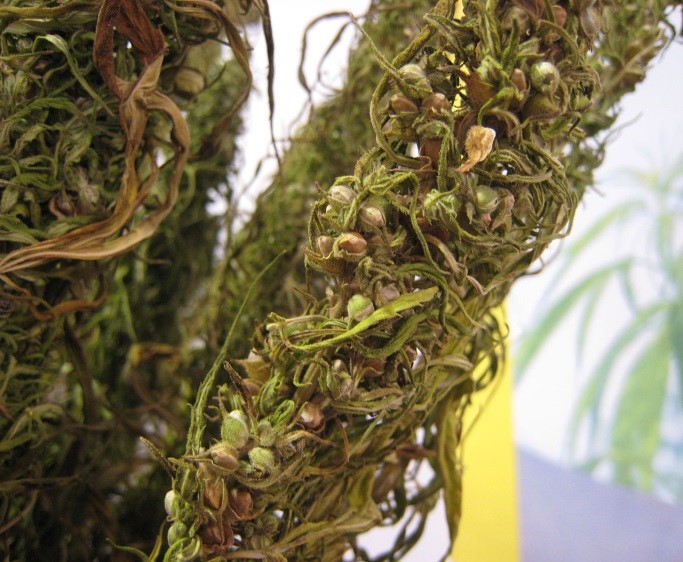
Fiber Hemp fields in Côtes-d’Armor, Brittany, France, and Hemp seeds
Although recreational marijuana and industrial hemp are both members of the species Cannabis sativa and contain the psychoactive component delta-9-tetrahydrocannabinol (THC), they are distinct strains with unique biochemical compositions and uses. Hemp has lower concentrations of THC and higher concentrations of Cannabidiol (CBD), which decreases or eliminates its psychoactive effects. The legality of industrial hemp varies widely between countries. Some governments regulate the concentration of THC and permit hemp that’s bred with an especially low THC content: usually <0.2%.
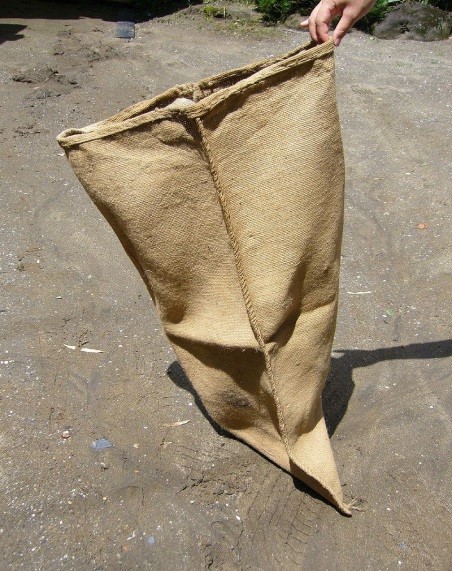
Hemp stem showing fibers and one of many end products: a sack for storage
Hemp seeds
Hemp is used to make a variety of commercial and industrial products including rope, clothes, food, paper, textiles, plastics, insulation and biofuel. The bast fibers can be used to make textiles that are 100% hemp, but they are commonly blended with other organic fibers such as flax, cotton or silk, to make woven fabrics for apparel and furnishings. The inner two fibers of the plant are woodier and typically have industrial applications, such as mulch, animal bedding and litter. When oxidized (commonly referred to as “drying”), hemp oil from the seeds becomes solid and can be used in the manufacture of oil-based paints, in creams as a moisturizing agent, for cooking, and in plastics. Hemp seeds have been used in bird feed mix as well. A survey in 2003 showed that more than 95% of hemp seed sold in the European Union was used in animal and bird feed.
Hemp seeds can be eaten raw, roasted, ground into a meal, sprouted, or made into dried sprout powder. The leaves of the hemp plant can be consumed raw in salads. Hemp can also be made into a liquid and used for baking or for beverages such as hemp milk, hemp juice, in beer and chocolate to give it its typical bitter taste and tea.
Hempseed oil is cold-pressed from the seed and is high in unsaturated fatty acids. In 2015, the U.S. imported approximately $200 million worth of hemp products, mostly driven by growth in demand for hemp seed and hemp oil for use as ingredients in foods such as granola.
Currently, there is a fast-growing market for hemp pulp, for example as high-quality paper and cigarette paper. Hemp fiber is mixed with fiber from other sources than Hemp.
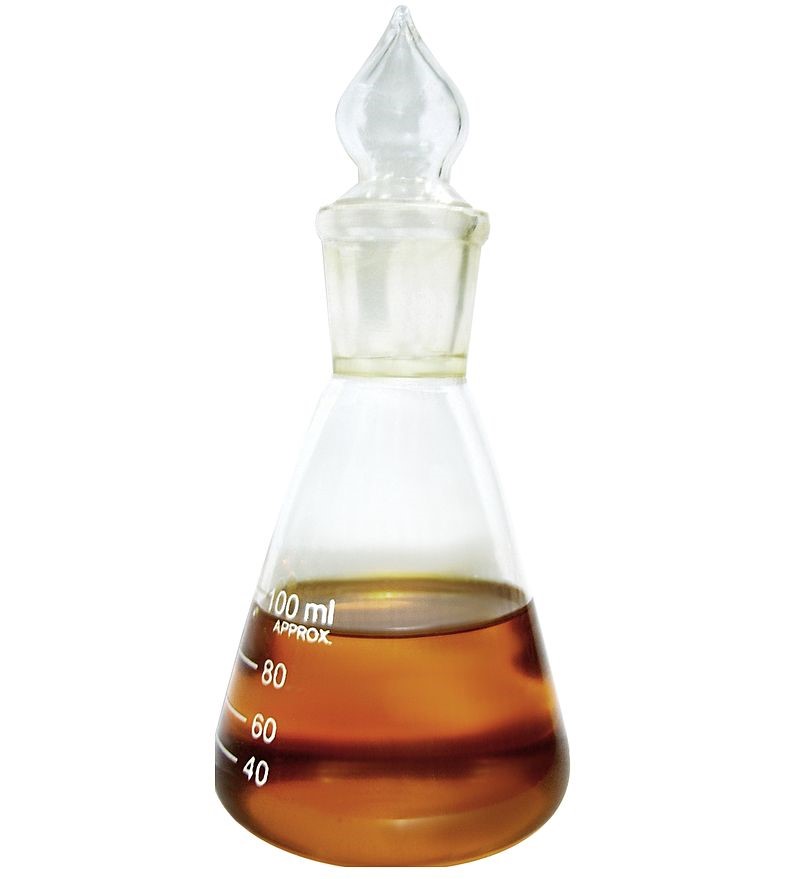
Biodiesel
Biodiesel are made from the oils in hemp seeds and stalks and alcohol fuel (ethanol or, less commonly, methanol) from the fermentation of the whole plant. Biodiesel produced from hemp is sometimes known as “hempoline.”
The world-leading producer of hemp is France, which produces more than 70% of the world output. China ranks second with approximately a quarter of the world production. There is smaller production in Europe, Chile and North Korea. Over thirty countries produce industrial hemp, including Australia, Austria, Canada, Chile, China, Denmark, Egypt, Finland, Germany, Great Britain, Hungary, India, Italy, Japan, Korea, Netherlands, New Zealand, Poland, Portugal, Romania, Russia, Slovenia, Spain, Sweden, Switzerland, Thailand, Turkey and Ukraine. As part of a campaign to stimulate sustainable agriculture, the European Union (EU) supports farmers who want to switch to the cultivation of fiber Hemp with 6.000€ per hectare.
Hemp fibers better than graphene
Graphene is an allotrope of carbon in the form of a two-dimensional, atomic-scale, honey-comb lattice in which one atom forms each vertex. It is the basic structural element of other allotropes, including graphite, charcoal, carbon nanotubes and fullerenes. It can also be considered as an indefinitely large aromatic molecule, the ultimate case of the family of flat polycyclic aromatic hydrocarbons.
Graphene has many extraordinary properties. It is about 100 times stronger than the strongest steel. It conducts heat and electricity efficiently and is nearly transparent. Graphene also shows a large and nonlinear diamagnetism, even greater than graphite, and can be levitated by Nd-Fe-B magnets. Researchers have identified the bipolar transistor effect, ballistic transport of charges and large quantum oscillations in the material.
Scientists have theorized about graphene for decades. It has likely been unknowingly produced in small quantities for centuries, through the use of pencils and other similar applications of graphite. It was originally observed in electron microscopes in 1962, but only studied while supported on metal surfaces. The material was later rediscovered, isolated and characterized in 2004 by Andre Geim and Konstantin Novoselov at the University of Manchester. Research was informed by existing theoretical descriptions of its composition, structure and properties. High-quality graphene proved to be surprisingly easy to isolate, making more research possible. This work resulted in the two winning the Nobel Prize in Physics in 2010 “for groundbreaking experiments regarding the two-dimensional material graphene.”
The global market for graphene is reported to have reached $9 million by 2012 and $300 in 2015 with most sales in the semiconductor, electronics, battery energy, telecommunications, super conductors and composites industries.

Graphene is an atomic-scale honeycomb lattice made of a single layer of carbon atoms
Conventional batteries store large reservoirs of energy and drip-feed it slowly, whereas supercapacitors can rapidly discharge their entire load.
They are ideal in machines that rely on sharp bursts of power. In electric cars, for example, supercapacitors are used for regenerative braking.
Releasing this torrent requires electrodes with high surface area – one of graphene’s many phenomenal properties.
Section 2: Medicinal Hemp (Cannabis sativa)
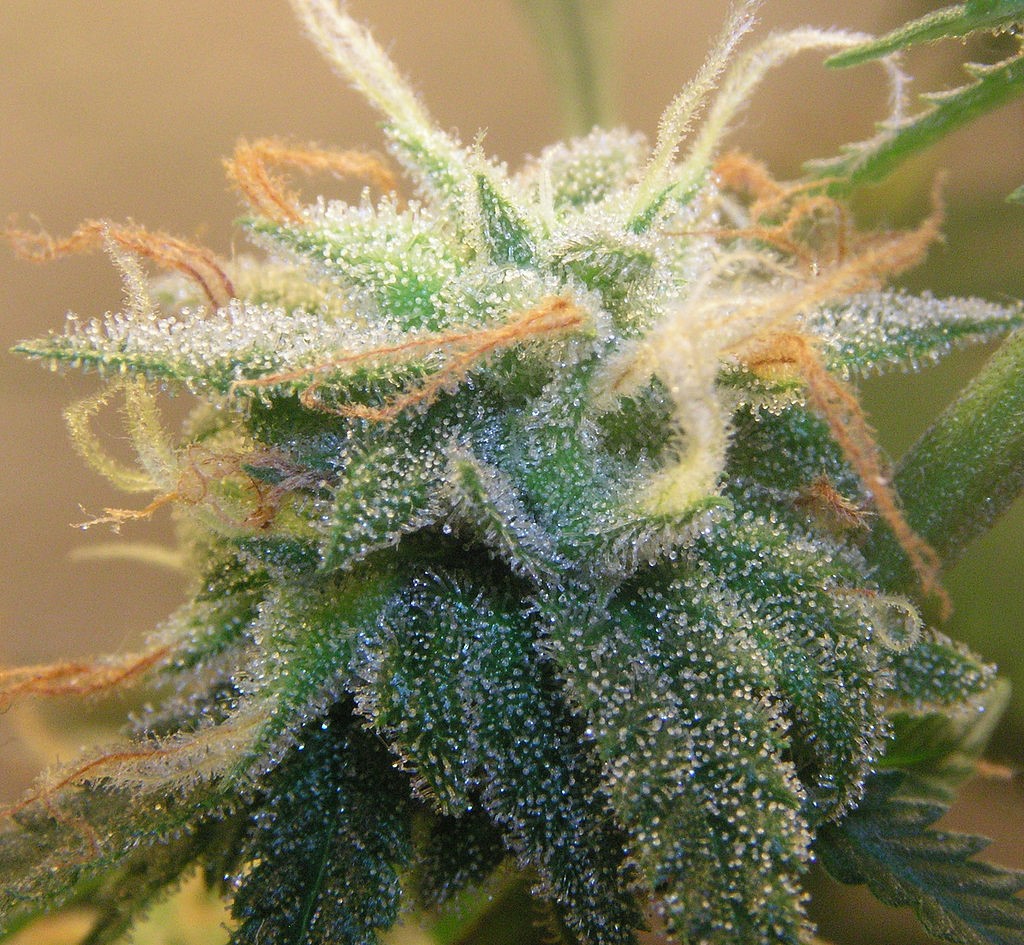
The bud of a Cannabis sativa flower coated with trichomes bearing Cannabidiol (CBD), Tetrahydrocannabinol (THC) and other Cannabinoids
Medicinal Hemp has been defined as Hemp containing >0.2% THC. Usually, Medicinal Hemp is cultivated for its THC content which is the only Cannabinoid out of 68 isolated and well-defined Cannabinoids which has psychotropic effects.
Cannabis sativa has been use for its bio-medical actions since 3.000 years and played an important role in Chinese and Western medicine. Up till the 1985, Cannabis in various forms where manufactured and available through any local pharmacy in The Netherlands, Germany, Switzerland and in Northern Europe at large.
The interest in the medicinal properties of Cannabis sativa has surged over the last three decades and in the EU Cannabis derivates have been licensed again for medical use since 10.-15 years.
In most European countries, THC can be prescribed and usually the health insurance picks up the bill.
In coffee shops, usually owned by the local city government of Amsterdam, the Netherlands, Hemp seeds can be obtained legally which will grow Hemp which contains up to 14% THC.
Dronabinol is the INN for a pure isomer of THC, (–)-trans-Δ9-tetrahydro-cannabinol, which is the main isomer found in cannabis. It is used to treat anorexia in people with HIV/AIDS as well as for refractory nausea and vomiting in people undergoing chemotherapy. It is safe and effective for these uses.
THC is also an active ingredient in nabiximols, a specific extract of Cannabis that was approved as a botanical drug in the United Kingdom in 2010 as a mouth spray for people with multiple sclerosis (MS) to alleviate neuropathic pain, spasticity, overactive bladder, Crohn’s Disease, LED, Vertigo (Syndrome of Meniere) and other symptoms and diseases.
Cannabidiol (CBD) is one of at least 113 active cannabinoids identified in cannabis. It is a major phytocannabinoid, accounting for up to 40% of the plant’s extract. CBD is considered to have a wide scope of potential medical applications – due to clinical reports showing the lack of any side effects, particularly a lack of psychoactivity (as is typically associated with ∆9-THC, or Dronabibol), and non-interference with several psychomotor learning and psychological functions.
Cannabidiol (CBD) use in Epilepsy
Dravet syndrome is a rare form of epilepsy that is difficult to treat. It is a catastrophic form of intractable epilepsy that begins in infancy. Initial seizures are most often prolonged events and in the second year of life other seizure types begin to emerge. A number of high profile and anecdotal reports have sparked interest in treatment of Dravet syndrome with cannabidiol.
Some cannabis/hemp extract preparations containing CBD are marketed as dietary supplements and claim efficacy against Dravet Syndrome. One such preparation is marketed under the tradename Charlotte’s Web Hemp Extract. Blended/suspended in oil, the supplement contains 0.3% THC.
http://www.dravetfoundation.org/dravet-syndrome/what-is-dravet-syndrome#sthash.jAC0bZ89.dpuf What is Dravet Syndrome?
GW Pharmaceuticals is seeking FDA approval to market a liquid formulation of pure plant-derived CBD, under the trade name Epidiolex (containing 99% cannabidiol and less than 0.10% Δ9-THC) as a treatment for Dravet syndrome. Epidiolex was granted fast-track status and is in late stage trials following positive early results from the drug.
A 2014 review stated that cannabidiol has been claimed, anecdotally, to be of benefit in helping people with epilepsy. Information in the review stated that there is no established mechanism of action and the lack of high-quality evidence in this area precluded conclusions being drawn. But new clinical data that merged in 2016 showed more evidence of the benefits of CBD in not only Dravet Syndrome but also in other, more common forms of epilepsy.
The 2016 review in The New England Journal of Medicine states that since 2013, data has been collected on patients with severe epilepsy (Dravet’s syndrome and the Lennox–Gastaut syndrome). Among 137 patients treated with Epidiolex (qualifies chemically as hemp, see Legal status below), the median reduction in the number of seizures was 54%.
Psychosis
There is tentative evidence that CBD had an anti-psychotic effect, but research in this area is limited.
Safety
CBD safety in humans has been studied in multiple studies, suggesting that it is well tolerated at doses of up to 1500 mg/day (p.o.) or 30 mg (i.v.).
Gloss D, Vickrey B (13 June 2012). “Cannabinoids for epilepsy”. Cochrane Database Syst Rev (Review). 6: CD009270.doi:10.1002/14651858.CD009270.pub2. PMID 22696383.
Devinsky, Orrin (2015). “Efficacy and Safety of Epidiolex (Cannabidiol) in Children and Young Adults with Treatment-Resistant Epilepsy”. Annual Meeting Abstracts.American Epilepsy Society. Retrieved 13 December 2015.
Angus, Chen (8 December 2015). “Marijuana’s Main Ingredient, Cannabidiol, May Be An Effective Way To Treat Epilepsy”. Medical Daily. Retrieved 14 December2015.
Devinsky O, Cilio MR, Cross H, Fernandez-Ruiz J, French J, Hill C, Katz R, Di Marzo V, Jutras-Aswad D, Notcutt WG, Martinez-Orgado J, Robson PJ, Rohrback BG, Thiele E, Whalley B, Friedman D (2014). “Cannabidiol: pharmacology and potential therapeutic role in epilepsy and other neuropsychiatric disorders”.Epilepsia (Review). 55 (6): 791–802. doi:10.1111/epi.12631. PMC 4707667.PMID 24854329.
Friedman D, Devinsky O (2016). “Cannabinoids in the Treatment of Epilepsy”(PDF). N. Engl. J. Med. 374 (1): 94–5. doi:10.1056/nejmc1512758.
Leweke FM, Mueller JK, Lange B, Rohleder C (2016). “Therapeutic Potential of Cannabinoids in Psychosis”. Biol. Psychiatry. 79 (7): 604–12.doi:10.1016/j.biopsych.2015.11.018. PMID 26852073.
Schubart CD; et al. (2013). “Cannabidiol as a potential treatment for psychosis”.European Neuropsychopharmacology. 24: 51–64.doi:10.1016/j.euroneuro.2013.11.002.
Australia
Prescription Medicine (Schedule 4) for therapeutic use containing 2 per cent (2.0%) or less of other cannabinoids commonly found in cannabis (such as ∆9-THC).
Canada
Cannabidiol is a Schedule II drug in Canada.
UK
Cannabidiol, in an oral-mucosal spray formulation combined with delta-9-tetrahydrocannabinol, is a prescription product available for relief of severe spasticity due to multiple sclerosis (where other anti-spasmodics have not been effective).
EU
Cannabidiol is listed in EU Cosmetics Ingredient Database and is therefore, not a controlled substance.
Table 1. Pharmacologic Characteristics of Some Main Cannabinoids
| Effect | Delta-9-THC | CBD | CBG | CBN | Delta-8-THC |
| Vomiting | ¯ | ||||
| Appetite | | ||||
| Spasticity | ¯ | (¯) | |||
| Epilepsy | ¯ | ¯ | ¯ | ¯ | |
| Migraine | ¯ | ||||
| Pain | ¯ | ¯ | ¯ | ||
| Eye Ball Pressure | ¯ | ¯ | ¯ | ¯ | ¯ |
| Bronchial Dilatation | | ® | ® | ||
| Bacterial Growth | ¯ | ¯ | ¯ | ||
| Inflammation | ¯ | ¯ | |||
| Fatigue/Relax | | | | | |
| Urinary Excretion | | ||||
| Gut Motility | ¯ | ® | ¯ | ||
| Core Temperature | ¯ | | |||
| Coronary Flow | (¯) | | ® | ||
| Pulse | | ® | ¯ | ||
| Skin Sensitivity | | ||||
| Psychotropic Effects | | ¯ | | | |
| Survival various Cancers | | |
https://en.wikipedia.org/wiki/Tetrahydrocannabinol
https://en.wikipedia.org/wiki/Hemp
www.bbc.com/news/science-environment-28770876
https://en.wikipedia.org/wiki/Graphene
www.internationalhempassociation.org
https://www.votehemp.com/PDF/hemp0501.pdf
https://www.colorado.gov/pacific/agplants/industrial–hemp
Ad 1) Industrial Hemp: licensing and subsidies
Introduction
What is Industrial Hemp? Industrial hemp means a plant of the genus Cannabis and any part of the plant, whether growing or not, containing a delta-9 tetrahydrocannabinol concentration of no more than three-tenths of one percent (0,3%) on a dry weight basis.
The Industrial Hemp Program in the EU registers growers of industrial hemp and samples the crop to verify that the THC concentration does not exceed 0.3% on dry weight basis.
Interest in commercial hemp production continues to grow in the United States. To date, all states have authorized marketing and production of industrial hemp legalized commercial hemp production. Ultimately it is the Drug Enforcement Agency (as mandated by federal statute), who has the authority to permit hemp production (for research or commercial purposes), despite state attempts to usurp this power.
As these and other states contemplate full-scale commercial production, the experiences of several decades by Canada and the European Union (EU) can be insightful. Both Canada and the EU have diverse agricultural sectors that are well-supported by government programs, similar to that of the United States.
Canada legalized hemp production in 1996 and licenses commercial production for those varieties of Cannabis sativa with less than 0.3% tetrahydrocannabinol (THC) content.
The government of Canada does not provide any direct monetary support for hemp production or processing but the EU does extensively since the early 1970s.
Hemp production in many European countries, notably France, Italy and the Netherlands, has never been prohibited. In addition, the European Union provides incentives — including direct monetary aid to farmers and processors — to support revive their domestic hemp industry. Why has the EU been so proactive in supporting their hemp market? The EU has a tradition of providing extensive subsidies to many, if not all, of its agricultural industries, and hemp is no different. It could also be said that the EU has a much stronger environmental voice, as evidenced by the existence of a bonafide Green Party, the highest rate of organic and bio-dynamic food consumption per capita of the industrialized nations, and arguably some of the best.
The founding legislation providing aid to the hemp industry also provided support to the flax industry. Subsequent amendments to this legislation affect both fiber crops.
Within the European Union, farmers can obtain a significant subsidy for the cultivation of hemp and flax. The basis for the subsidy was established in the early 1970’s to enable farmers a decent income from flax or hemp and to compete with world market prices. Despite the subsidy, hemp cultivation only survived the 1970’s and 1980’s in France and Spain, with a planted area of about 6,000 hectares. A renewed interest in hemp as a natural fiber source enabled the cultivation of hemp in the UK in 1993, followed by The Netherlands in 1994 and Germany in 1996. The total area increased to about 12,000 hectares in 1996, and has increased to more than 100,000 hectares by 2014.
The EU regulations 1308/70, 619/71 and 1164/89 form the basis of the current subsidy practice. These regulations are applicable for flax and hemp (Cannabis sativa) with GN-codes 5301 and 5302. The practical workings of these regulations differ in each member country. On an average, the subsidy to grow Cannabis sativa is about 4,500€ per hectare (differs slightly from state to state of the EU).
Market Demand
Hemp fiber produced in the EU has gone to a variety of uses. However, most of the market information is rather anecdotal and suggests a niche market of limited scale. Examples of hemp markets in various Member States follow:
Hemcore, one of the largest hemp companies in England, currently contracts about 12,000 acres of hemp for hurd production (the woody inner core of the stalk) for use as horse bedding. Hemcore has also developed a new spinning technology. Another UK company, Friendship Estates, sells hemp bedding for the pet industry. The Bioregional Development Group in Surrey has developed flax and hemp fibers for textiles and paper production. The hurds and seeds could also be used for composite board, linoleum, and animal feed.
The new board of EIHA at the International Congress on iHemp:
“Growing demand for natural fibers from the automotive sector, for hemp seeds and CBD from the health food sector – first ISSC-PLUS sustainability certification for hemp – new board of Directors for the European Industrial Hemp Association (EIHA) – next EIHA conference in June 2016.”
and
EIHA:
“Hemp cultivation areas in Europe have expanded from 8,000 ha in 2011 to almost 25,000 ha in 2016, which shows a triple increase in 5 years. The reason is the growing demand for different raw materials obtained from this outstanding multi-purpose crop. Hemp fibers are used in the automotive industry as well as in insulation and specialty paper production. They are particularly well established as material for natural fiber composites (NFC) used for the reinforcement of automotive interior parts. Due to their huge potential in light-weight construction, the demand for NFC has been growing continuously. Whereas exotic natural fibers from Asia are suffering from limited availability because of the local competition with food crops and temporary export bans, European hemp fibers can meet increasing demands – if the demand is communicated before the sowing time in March. Hemp seeds are becoming an important factor in both functional and supplement food industries. In 2015, hemp food products entered the mainstream market and were produced by well-known companies. Farmers in more and more European countries are discovering hemp as an alternative crop for the production of hulled hemp seeds, protein powder and oil with high nutritional value. Hemp seed is a nutritional powerhouse and is highly digestible. Its oil has an excellent fatty acid spectrum, it has the “almost perfect” balance of the omega-3 and -6 essential fatty acids plus the presence of two “higher” omega-3 and -6 fatty acids, stearidonic acid (SDA) and gamma linoleic acid (GLA), the share of unsaturated fatty acids is incredible 90%. The protein includes all 21 amino acids providing minerals, Vitamin E and is high in dietary fiber. In addition, the hemp crop produces Cannabidiol (CBD), a food supplement with therapeutic potential, which does not have any psychoactive effects. Many companies are globally investing in hemp as natural drug; this new natural medicine could reach at least a similar significance as valerian. The German company and EIHA member “Hanf Farm GmbH” is the first hemp producer worldwide to receive the “International Sustainability and Carbon Certification (ISCC PLUS)” for their hemp raw material “Hemp flower” and “Hemp nuts”. More certifications for different hemp products will follow this year, including those for the fiber. The European Industrial Hemp Association (www.eiha.org) is the organization of the European Hemp Industry. It represents cultivators, processors, producers and traders as well as scientists.”
European Industrial Hemp Association (EIHA) is a consortium of the hemp-processing industry. It represents the common interest of industrial hemp farmers and producers, both nationally and on a European level. EIHA is the only European consortium in the industrial hemp sector. This sector includes, amongst other things, the use of hemp fibers, shavings, seeds and cannabinoids. Originally founded as an association for the European hemp industry, a quarter of the 130 EIHA’s members are based in countries outside the EU.
Industrial hemp is making its “Coming Back” in the EU, the USA and Canada. Hemp’s many uses from food to paper to cloth and clothing to modern technologies such as hempcrete are just astounding. The most ground breaking of these though is hemp “graphene.”
To explain, regular graphene is comprised of a two-dimensional, hexagonal honeycomb lattice layer of tightly packed carbon atoms, and is one of the strongest, lightest and most conductive compounds ever discovered. It is considered one of the best materials for supercapacitor electrodes. The term was also used in early descriptions of carbon nanotubes, and can be considered a type of nanotechnology. Many of graphene’s uses are in the area of energy storage; some uses that are under development include electronics, biological engineering, filtration and strong, lightweight composite materials.
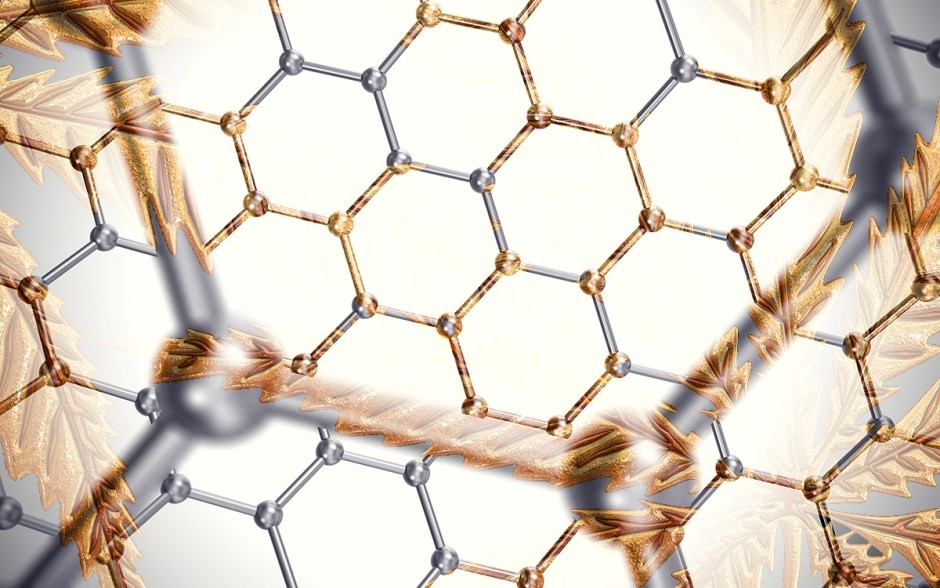
However, a scientist by the name of Dr. David Mitlin from Clarkson University in New York says he’s found a way to manufacture hemp waste into a material that appears to be better than graphene. Dr. Mitlin and his team were able to recycle leftover hemp-based fiber, cook it down and then dissolve it until carbon nanosheets that resembled the structure of graphene were left behind. They proceeded to build these nanosheets into powerful energy-storing supercapacitors with high energy density, thus creating a hemp-based “graphene.” Essentially, Mitlin’s team discovered a process for converting fibrous hemp waste into a unique graphene-like nanomaterial that many say out-performs graphene.

David Mitlin, Professor and GE Chair in Oil and Gas Systems
Creating this graphene-like hemp material costs only a fraction of regular graphene production. Graphene costs as much as $2,000 per gram to manufacture, while the hemp-based nanomaterial can be manufactured for less than $500 per ton. To give proper perspective, there are 907,185 grams in one ton.
Hemp professionals and activists in Oregon and elsewhere in the USA and the EU are thrilled about this new technology and its potential for energy. Ben Christensen, owner of Oregon Hemp Works in Portland, said, “As a renewable energy major and hemp business owner, I find this very exciting. One of the bigger challenges with renewable energy is storage. I often find hemp being left out of the renewable energy conversation, but I feel you can’t really talk about renewable energy or sustainability unless hemp is being talked about as well. It also seems that when hemp is introduced as a replacement, it is just as good as what it’s replacing and even better in a lot of cases.”

BMW has finally come out with an all-electric car, which made its world debut on Monday. And in true BMW fashion, they’ve outdone just about every other electric car in what matters most: Weight. The BMW i3 is a mere 2,700 pounds – 800 pounds less than the Nissan Leaf and the Chevy Volt.

Hemp and kenaf materials contribute to the BMW i3′s natural looking interior
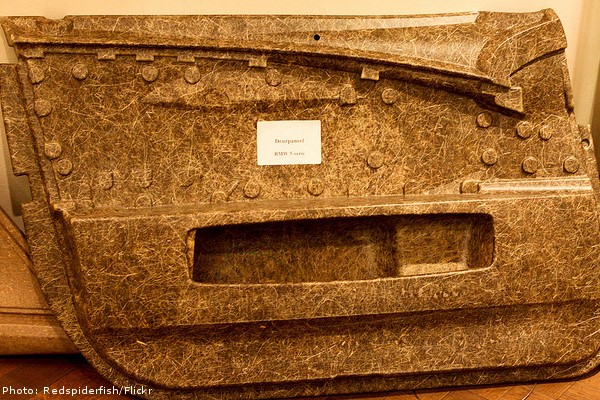
A BMW 5 series door panel completely made out of hemp

The i8 will be the next electric car sold by BMW. The hybrid supercar accelerates from 0 to 100 km/h in 4.8 seconds and has an electronically limited top speed of 250 km/h

Henry Ford (Chicago) axing his car made of hemp plastic (1941)


Amy Peradotta is the Chairwoman of the Portland Chapter of Women Grow. Women Grow is a national professional networking organization with 45 chapters across the US, Canada and the EU. Women Grow serves to connect, educate, and empower women in the cannabis industry. Currently, the Portland chapter is the largest and fastest growing chapter in the country. Peradotta is an advocate for the entire cannabis genus, recognizing that all cultivars/strains/varieties of the Cannabis L. Sativa plant – from industrial hemp to medical and adult use – serve to benefit mankind.
Amy Peradotta, hemp activist and chairwoman of the Portland Women Grow chapter, agreed. She expressed, “Using hemp cellulose to replace graphene in super-capacitor batteries will change how we store energy and how we mass produce electronic products from computers and phones to electric cars. Imagine a future where your electric car battery is made with hemp supercapacitor electrodes, the body of the car is made with nontoxic, lightweight hemp cellulose composite materials and the interior door panels and upholstery are made from hemp fiber. Then, we can also use hemp supercapacitors to store renewable energy for our indoor cannabis-grown houses made of hempcrete. Pair that with solar panels and you have a sustainably designed, energy efficient cannabis production facility.”
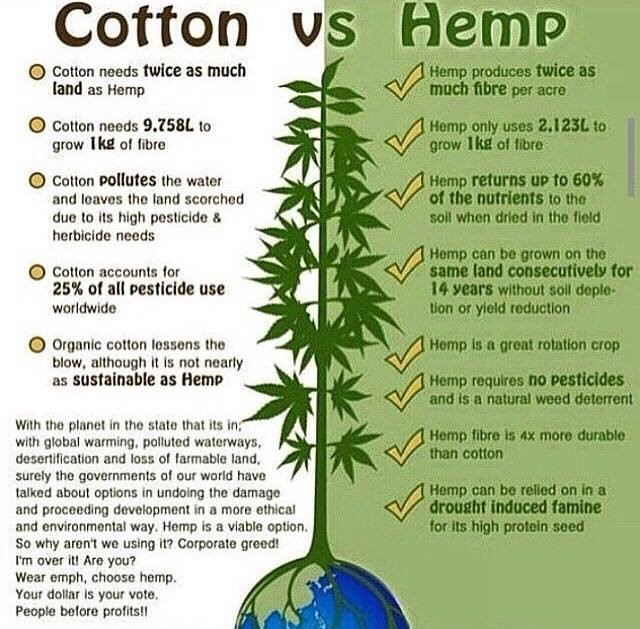
iHemp can replace cotton in many areas of human consumption.
Most people don’t understand the truly diverse value of hemp. Cultures have relied on this hardy plant for centuries to produce textiles such as clothing, fabric and paper. Today, hemp is also used for food, fuel, medicine, building materials and plastics. Now with the energy storage industry starting to take notice, perhaps more government authorities will take a closer look at this plant.

Joy Beckerman Maher, Industrial Hemp Professional & Public Relations Specialist
Joy Beckerman, principal at Seattle-based Hemp Ace International and a 20+ year veteran in the industrial hemp movement said, “As activists and entrepreneurs, we simply did not see this coming 25 years ago. No one was sufficiently intellectual back then to predict the unique and exponential power within micro fibrils from hemp bast fiber or hemp’s ability to completely revolutionize the most critical areas of research and development. Graphite whisker and carbon nanotube are highest in stiffness and strength, but they are severely cost-prohibitive. Hemp cellulose nanocrystals are a considerably low cost nanoparticle, which makes them enormously attractive and competitive when one looks at the larger picture including price, availability, toxicity and sustainability.”
Robert Gorter summarizes the potential market for iHemp in the EU as follows:
“There is a growing market for Hemp Food and Pharmaceuticals with potential Billions of Euros markets in Europe.”
And
“Hemp is a multi-purpose crop, delivering fibres, shivs, seeds and pharmaceuticals. Hemp seeds, small nuts with a high nutritional value, can be consumed raw, roasted or pressed into hemp oil, both with excellent and unique fatty acid profile and high value proteins. Both seeds and oil are used for human food and animal feed. The non-psychotropic Cannabinoid CBD is an interesting pharmaceutical and food supplement also derived from industrial hemp. In 2015, industrial hemp grew in the European Union to a cultivation area of 25,000 ha, a strong increase from 8,000 ha in 2011. The growth is mainly driven by the increasing demand from the hemp food, nutritional supplement industries and the pharmaceutical sectors.”
Hemp Food – highly nutritious “super (bio) food”
The “Market Study on Hemp Food” is based on a survey from August to October 2015 with 171 producers and traders of hemp food from 21 countries mainly spread across Europe and North America. The potential for growth and hemp’s health benefits were equally mentioned as the biggest strengths of the European and North American hemp food markets. The main market sections for hemp foods are the so called “super food”, “nutritious food” and “bio food”. All these markets are analyzed and discussed – including comparisons with other nuts in the European Union and the USA. A double digit growth rate is expected with demand rising especially in food goods. A hemp seed market potential linked to a penetration of 5% of the European nut market would signify am added market value of € 1 billion/year. Two major problems are delaying the growth: government legislation and lack of consumer awareness.

It seems like hemp can be used for almost anything these days, including ice cream. Made from hemp milk – a blend of hemp seeds and water – the concept of hemp gelato was born out of one man’s desire for a “delicious, nutritious, animal-and-earth-friendly frozen dessert.”
While the frozen treat may be an obvious choice for the lactose intolerant – including none other than Colorado Rep. Jared Polis, who reportedly sampled Zendulgence gelato last week at a Vote Hemp brunch and gave it “two thumbs up” – its incredible nutritional profile should be enough to tempt any ice cream lover.

Asher serving samples of his hemp gelato at a local Whole Foods Market
Just half a cup of Zendulgence gelato packs 600 milligrams of omega-3 fats, 4 to 5 grams of protein, 4 grams of fiber, and a variety of vitamins and minerals. Gluten-free, diary-free and only 190 calories per serving, Asher once said in an interview with Natural Products Expo he believes hemp gelato is so nutritious that “anyone can eat as much as they like.”
Cannabidiol – high potential in pharma and food
The “Market Study on Cannabidiol (CBD)” is based on the same survey as the hemp food study the majority of the participants were SME from Germany, USA and Canada. Currently, CBD is a market niche ruled by SME. Due to the fact that CBD is still a new product on the market, it is not surprising that 87.5% identify the potential for growth as CBD’s biggest strength in Europe and North America. Increased public and governmental awareness is crucial to expand the market and frame proper legislation, or the market risks being damaged at an early stage. Therefore, the way CBD is legally framed may affect its market size. According to the report, CBD has an upper market potential in Europe of € 2 billion if used as medicine for chronic diseases. Putting it on a level with over-the-counter medicine such as valerian, CBD has a minimum market penetration potential of € 24 million. The gap between upper and lower market potentials can be reduced by more consumer information, investments in research to support initial medical claims and adoption of the necessary legal provisions, as seems to be the current trend.
In the study by the NOVA Institute in Cologne in Germany, the market potential per disease was evaluated, such as epilepsy, anxiety disorders, ADHD, schizophrenia, inflammation-associated pain, dystonia and more.”

The International NOVA Institute in Cologne in Germany
Robert Gorter: “To think that the Cannabis plant can supplement modern technology and medicine so dramatically and for a fraction of the usual costs is really incredible. This only reaffirms why one must continue to defend Cannabis sativa and iHemp everywhere and push the various authorities to reschedule this plant. It is time that hemp be extensively researched, grown and mass produced for its infinite uses and unexplored technological applications.“
www.bbc.com/news/science-environment-28770876
www.nova-institut.de/bio/index.php?tpl=novalist
https://www.youtube.com/watch?v=srgE6Tzi3Lg